Nonprofits must comply with the IRS and file four financial statements to ensure they follow strict nonprofit regulations. Many of these statements are similar to what for-profit businesses file, but some significant differences exist.
Nonprofits also have a primary responsibility to their donors when filing and sharing these financial statements. Organizations must follow basic accounting practices when filing these statements and find ways to share these details in ways donors can understand.
Sharing financial statements with donors is one of the best ways to ensure transparency and build trust.
In this article, we’ll explain more about each financial statement, why and when nonprofits need financial statements and share examples of how organizations have used them in their annual reports.
Why Do Nonprofits Need Financial Statements?
Nonprofits must file four statements every year to comply with IRS rules. Most nonprofits use these statements in their annual or impact reports.
Organizations share these statements to be entirely transparent with their donors. By sharing what funds they collect and how they’re spent, donors can see how their gifts support the nonprofit’s programs and beneficiaries.
Financial statements also give donors a better understanding of how the organization is doing.
Foundations require nonprofits to provide financial statements when they apply for grants. Major donors also may want to see financial statements before giving a significant gift. When a nonprofit shares more about its financial health, foundations and sponsors see that the nonprofit is financially viable and feel safer giving.
Financial statements also help nonprofits determine the future of their organization. Board members can better understand the nonprofit’s capacity for growth. It also allows leadership to find potential financial opportunities and ways to address financial concerns.
The 4 Financial Statements Nonprofits Must Keep
1. Statement of Financial Position
The first and most desired financial statement is the Statement of Financial Position. Nonprofits use this statement to share what their organization owns and what it owes.
The idea is to give an overall picture of the nonprofit at a specific time. It will also show the financial health of their organization. Nonprofits must add this statement when filing Form 990.
Nonprofits use the statement of financial position to list their assets, liabilities, and net assets.
Assets = liabilities + net assets
Here’s an example from Code for Science & Society’s Statement of Financial Position from 2021. Our subsequent examples of other statements will be from this same report.
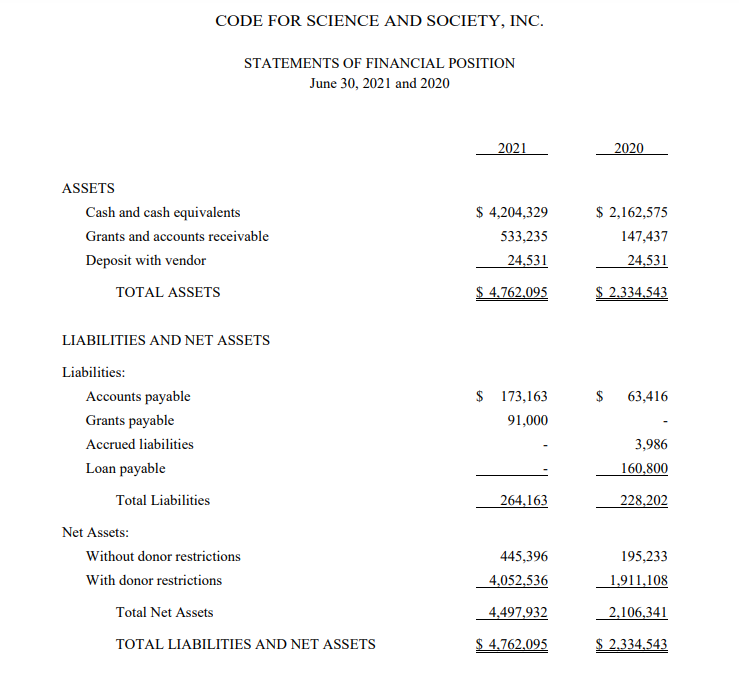
Let us have a look at what each element of this statement means.
1.1 Assets
Assets are what your organization owns. These can include office supplies and equipment, event supplies, cash, donations, grants, and property. You can also include intangible assets like copyrights, trademarks, and patents. In the end, nonprofits must list these assets in order of liquidity.
1.2 Liabilities
Liabilities are what your nonprofit owes. Liabilities include things like salaries, debt, and grants to other organizations. When listing your nonprofit’s liabilities, you must list them by when they must be paid and separated by current and long-term liabilities.
Long-term liabilities are car loans and mortgages. Current liabilities cover accounts payable debt like salaries and immediate payments.
1.3 Net assets
The IRS does not allow charities to make a profit. Your nonprofit’s liabilities and assets must balance. Net assets are any assets left over after subtracting your liabilities. Your net assets can be from the current and previous operating years and include anything that holds value. Nonprofits don’t have to list net assets line by line.
At times, supporters will give donations stipulating that they can only be used on a specific project or program. The net assets on your statement of financial position are where your organization must list these restrictions.
2. Statement of Activities
Nonprofits use the statement of activities to review changes to their net assets and show revenue and expenses over the accounting year. You can check with GAAP and IFRS practices to ensure you’re correctly categorizing net assets. You can also categorize them with and without donor restrictions.
Revenues – expenses = change in net assets
Here’s an example to help you get a better understanding. The below glimpse is taken from the same financial report of the Code for Science & Society that we shared earlier.

Gross receipts are the primary difference between nonprofits and for-profit companies filing a statement of activities. Nonprofits use gross receipts instead of gross sales as revenue. Net assets are the organization’s revenue minus its expenses.
Nonprofits can record revenue and expenses with a cash or accrual method. However, they often use the accrual method. The primary reason for this is this method lets nonprofits record revenue when it’s earned.
3. Statement of Cash Flow
The statement of cash flow shows how cash moves in and out of a nonprofit. Board members and other leaders can use this statement for better insight into how much is available to pay expenses.
Here’s what it looks like on Code for Science & Society’s financial report.

The statement of cash flow breaks down into three sections.
3.1 Operating
Operating revenue includes funds from donations, ticket sales, product sales, etc. Operating expenses are your employees’ salaries and the amount spent on equipment and supplies.
3.2 Investing
Investing revenue is the amount of interest you can make from investments. Investing expenses are the purchases of long-term investments and any payments on long-term investments like buildings, land, equipment, etc.
3.3 Financing
Finally, financing revenue comes from the earnings and interest earned on your financial activities and savings. Financial expenses include the interest paid on financial loans.
4. Statement of Functional Expenses
The statement of functional expenses gives donors more details on how the organization spends funds. The IRS requires nonprofits to include this statement when filing Form 990.
Online websites like Charity Navigator and GuideStar also use these reports to rate your organization.
Nonprofits must include natural and functional classifications for all expenses. Organizations will separate these expenses by programs, fundraising, and management. With each of these, nonprofits include salaries, events, administrative costs, etc.
Code for Science & Society depicts their financial expenses on this page of their report rather concisely and transparently.
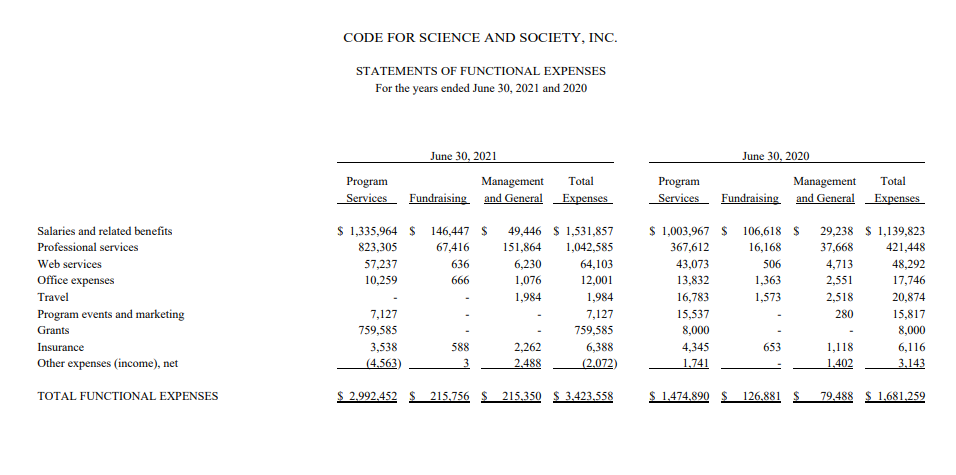
3 Great Examples of Nonprofit Financial Statements
As we mentioned earlier, many nonprofits use these financial statements in their annual reports to show transparency and build trust in their organization.
The following 3 nonprofits have included financial statements in different ways.
1. Wellington Zoo
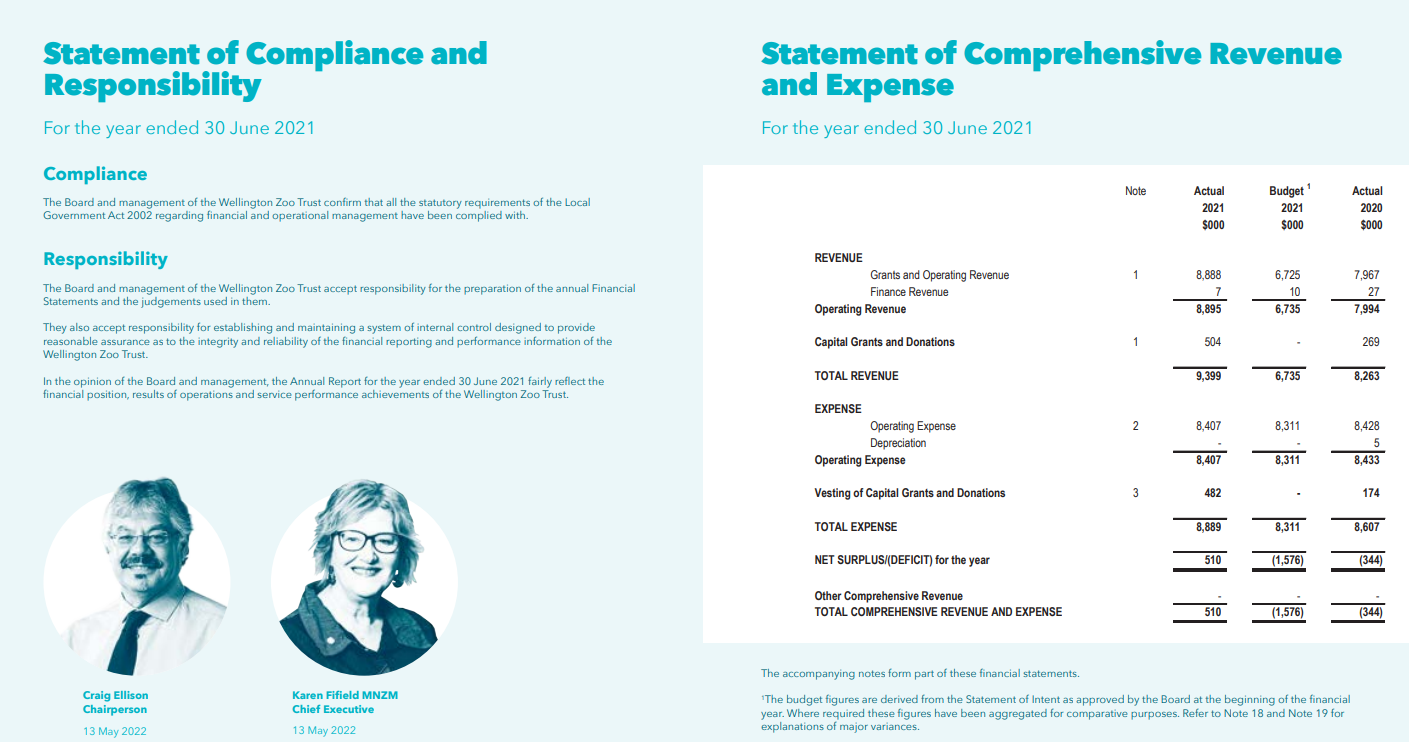
Wellington Zoo’s annual report uses its audited financial statements (from page 45) to show the organization’s financial health. This organization also states that the board and management stand behind these financial statements and includes pictures of their Board Chairperson and Chief Executive Officer.
The inclusion of the text and photographs in Wellington Zoo’s annual report further encourages trust in the organization.
Wellington Zoo also shares further details for each financial statement to explain who is reporting these facts and how they comply with accepted standards.
This nonprofit has shared more details than most of its followers need. But by sharing so much information, they are exceptionally transparent and strengthen relationships with their supporter base.
2. Heliconia Scholarship Foundation
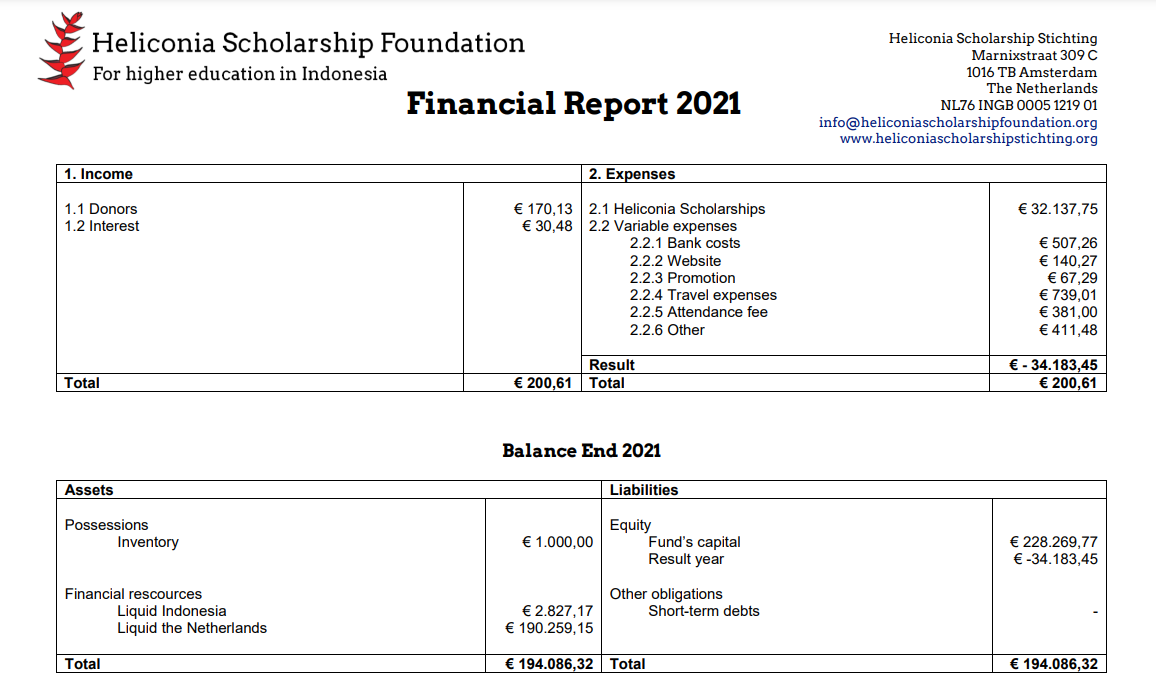
Heliconia Scholarship Foundation shares a financial report with its donors instead of an annual report. This decision makes sense since donors to a scholarship fund are likely concerned solely with financial details from this organization.
Compared with Wellington Zoo, the financial statements used in this report are easier to follow and provide fewer details.
On the other hand, they share how these funds support students throughout their education. The scholarship foundation’s details fit well with what donors expect to hear from the organization.
3. Save the Children
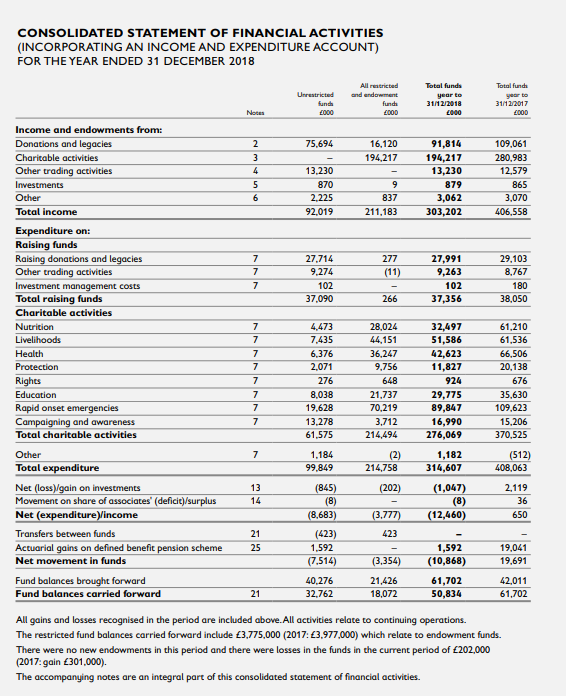
Save the Children’s annual report clearly states that an independent source audited their financial statements (starting from page 64). Once again, this statement will show transparency and build trust with their donors.
Save the Children adds these financial statements and a letter from the independent auditor when providing financial reports.
The letter from the independent auditor highlights their opinion that Save the Children is following all required financial laws. The auditors also make the statements interesting and target them to Save the Children’s English donor base.
England has undergone significant financial upheaval due to Brexit, and many citizens are concerned about the impact it could have on charities and their donations. Save the Children has made a wise decision to include a statement to address these concerns.
Final Thoughts
Nonprofits must file financial statements with the IRS to follow compliance laws, which is not the only reason they should include these activities. Providing detailed financial statements and an explanation of how these details help the organization and its beneficiaries strengthens relationships with donors and opens up opportunities to solicit significant gifts.
If you’re starting a nonprofit or have started one already and in need of knowing the ropes, check out our Nonprofit Blog. You’ll also find a plethora of other insightful topics including fundraising ideas, tips, donor management and communication guides, downloadable resources, and more over there. Subscribe to our monthly newsletter if you want us to send you the best Donorbox resources directly to your inbox.
Donorbox is an affordable and simple-to-use online fundraising tool with powerful fundraising features such as Recurring Donations, Crowdfunding, Peer-to-Peer, Events, Memberships, and more. You can also manage donors, send them automated donation receipts, add offline donations, let donors login and manage their accounts themselves, and more on Donorbox. Learn more on our website.
We have designed a success package for nonprofits that are willing to take their fundraising to the next level. Check out Donorbox Premium – talk with expert fundraising coaches, get priority tech support, have an account manager to guide you at all times, and discover powerful tools. Pricing is personalized for each organization. Book your demo today!
Disclaimer: By sharing this information we do not intend to provide legal, tax, or accounting advice, or to address specific situations. The above article is intended to provide generalized financial and legal information designed to educate a broad segment of the public. Please consult with your legal or tax advisor to supplement and verify what you learn here.










